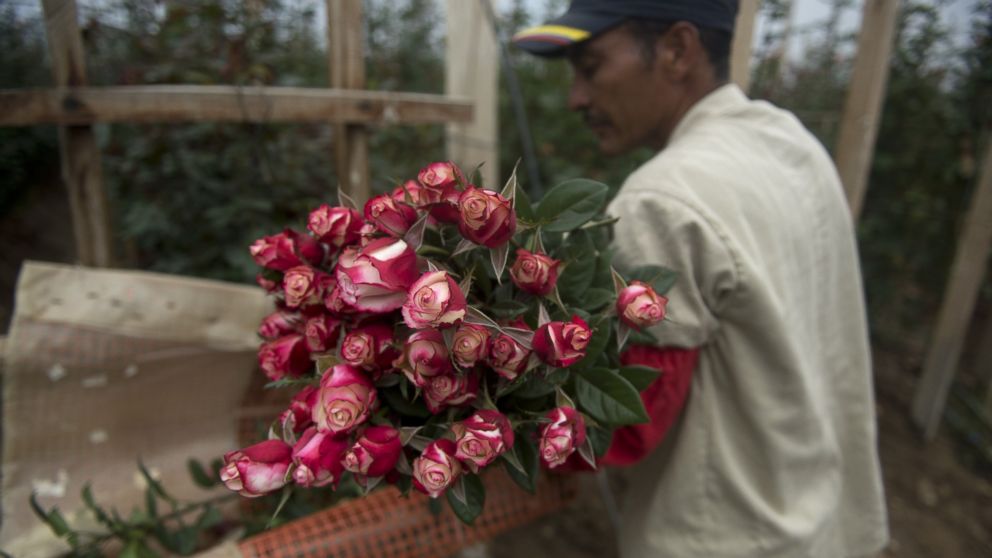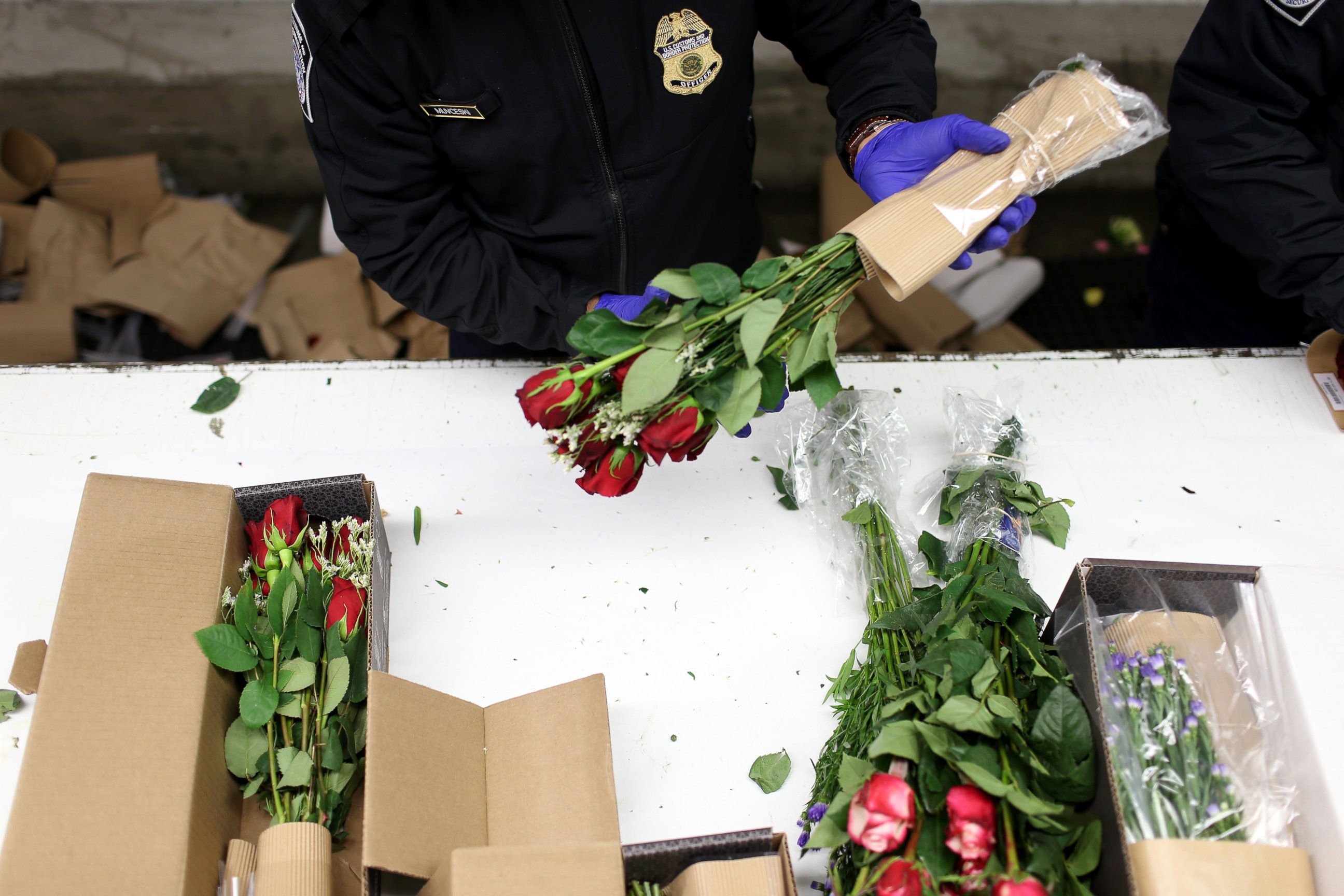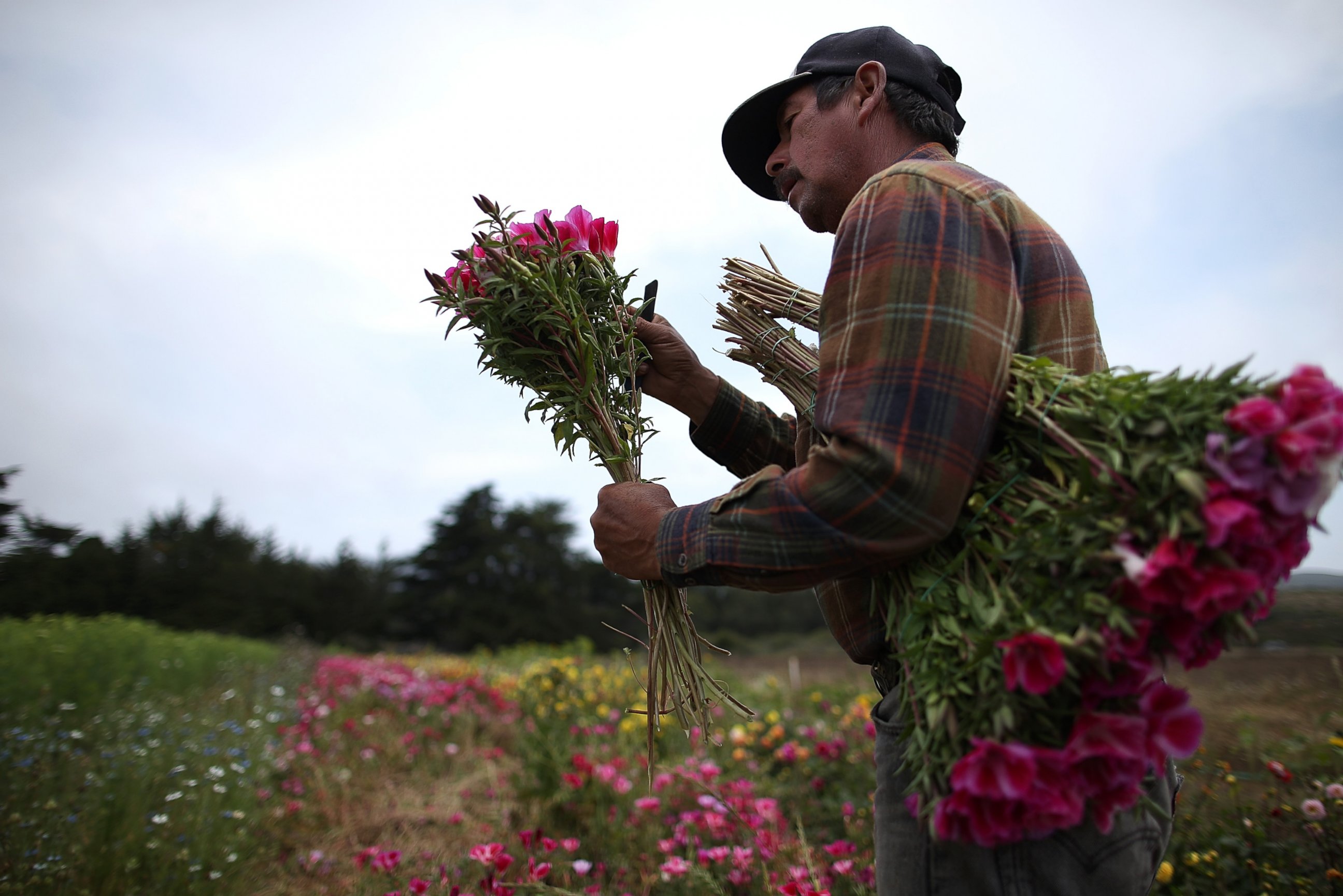Valentine's Day 2015: Source Locally Versus Colombia-Grown
Seventy-eight percent of cut flowers in the U.S. originate from one country.

— -- Most Americans will be receiving flowers from out of the country this Valentine's Day, but there's a small movement urging people to buy "local."
Imports account for about 64 percent of fresh flowers sold in the United States, according to the Society of American Florists. Colombia supplies 78 percent of all American cut flowers, followed by Ecuador at 15 percent and Mexico at 2 percent. Colombia also supplies half of all flowers going to Canada.
The Colombian flower industry values itself at more than $1 billion. Last year, the U.S. imported 954.6 million flowers from Colombia, up 2.2 percent from 2013. At Miami airport, where two-thirds of total exports from Colombia travel, customs officers constantly shuffle through shipments of flowers.

"We have production available year-round bit the flowers delivered as we speak are probably cut less than 24 hours ago, or a max of 48 hours before they’re delivered," Procolombia's executive director of the U.S. Luis German said. "It's a very tight cycle."
Meanwhile, some American growers are touting the "slow flowers" movement: its closer oversight of labor practices and the so-called smaller carbon footprint with its shorter travel distance. The Association of Specialty Cut Flower Growers reported an all-time high of 700 members, the majority of whom are in the U.S.
“The florists I supply simply like how much fresher my flowers are. They’re not having to pick through my supply to pull out wilted or dead petals and leaves,” Megan Hird, a "farmer florist" in Nebraska told the Associated Press.
California is the biggest fresh flower growing state, covering 76 percent of the domestic market, followed by Washington at 6 percent and New Jersey and Oregon tied at 4 percent.

Jennifer Sparks, vice president of marketing for the Society of American Florists, said most florists tell her consumers are not asking for flowers grown in specific areas, imported or domestic.
"A few florists have told me that in the case when a customer does ask about the origin of the flowers, they are impressed when they explain that flowers come from all over the world, including the U.S.," she said.
Marie Ackerman, Teleflora's vice president of education, suggests customers select in-season flowers. Otherwise, you will likely pay a premium. Peonies, for example, aren't in season until the spring, pending location.
"Even still, some of the most exotic peonies come from Thailand so one stem may cost you $15 or more even when sourced in-season," she said.




